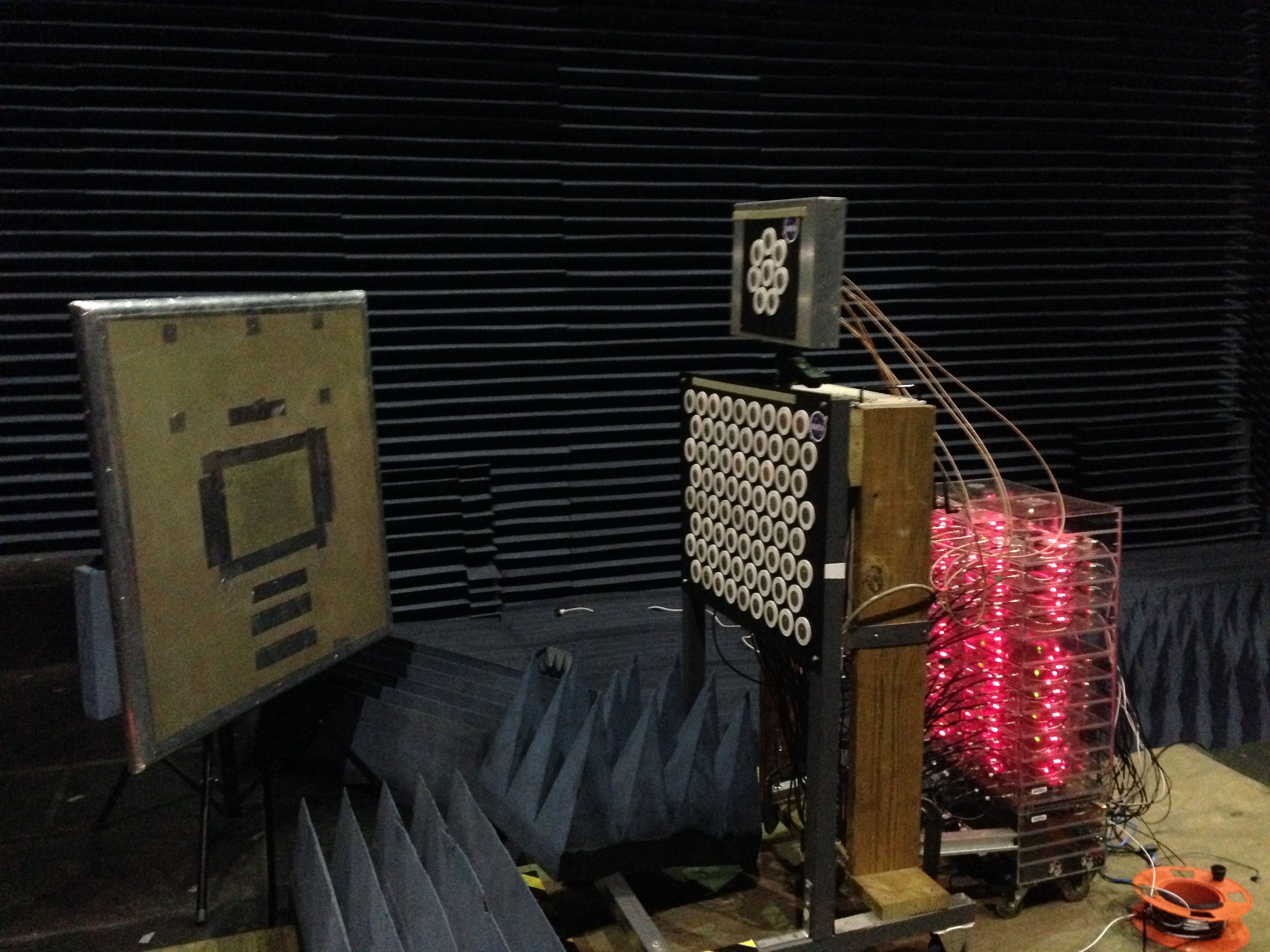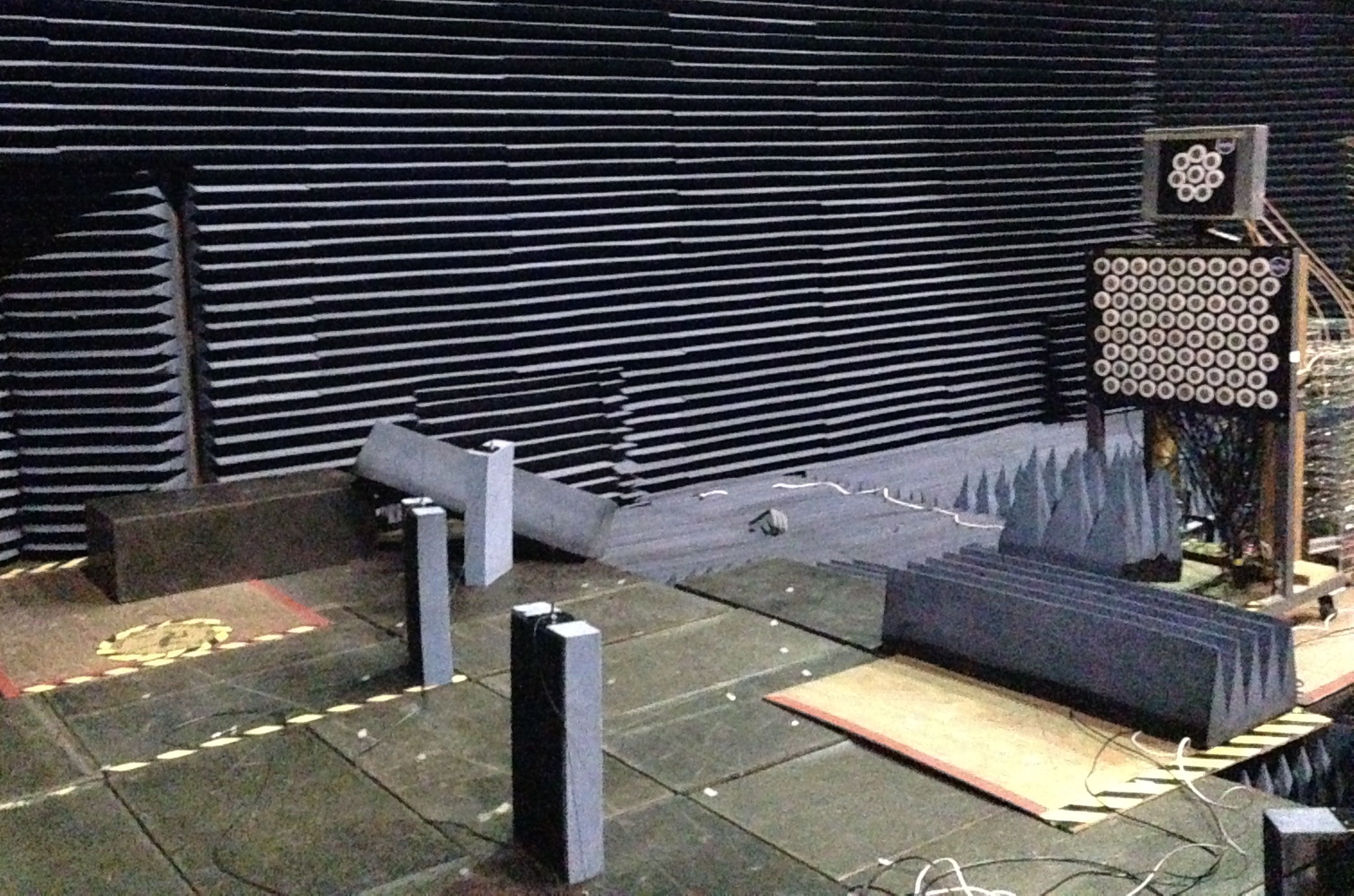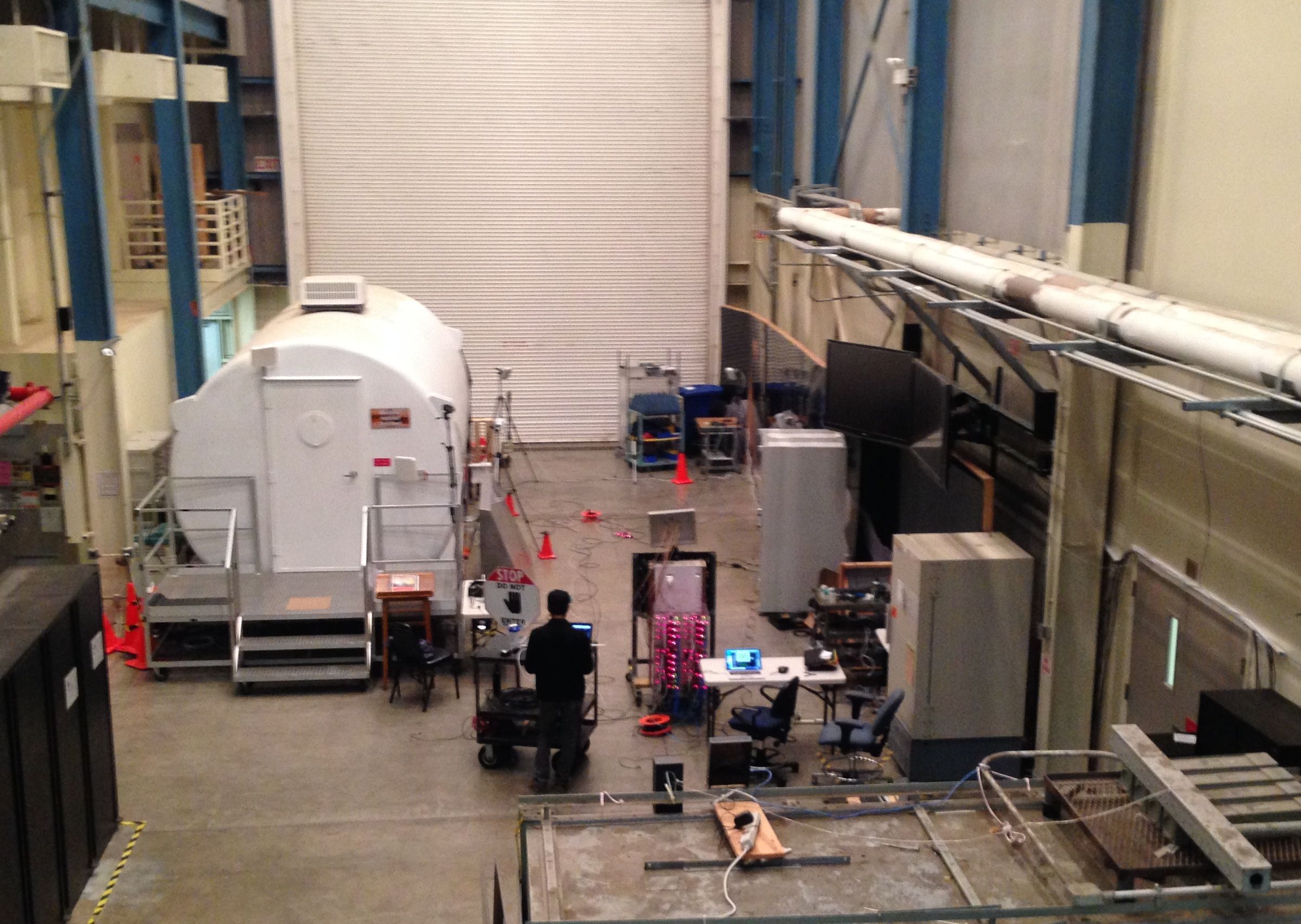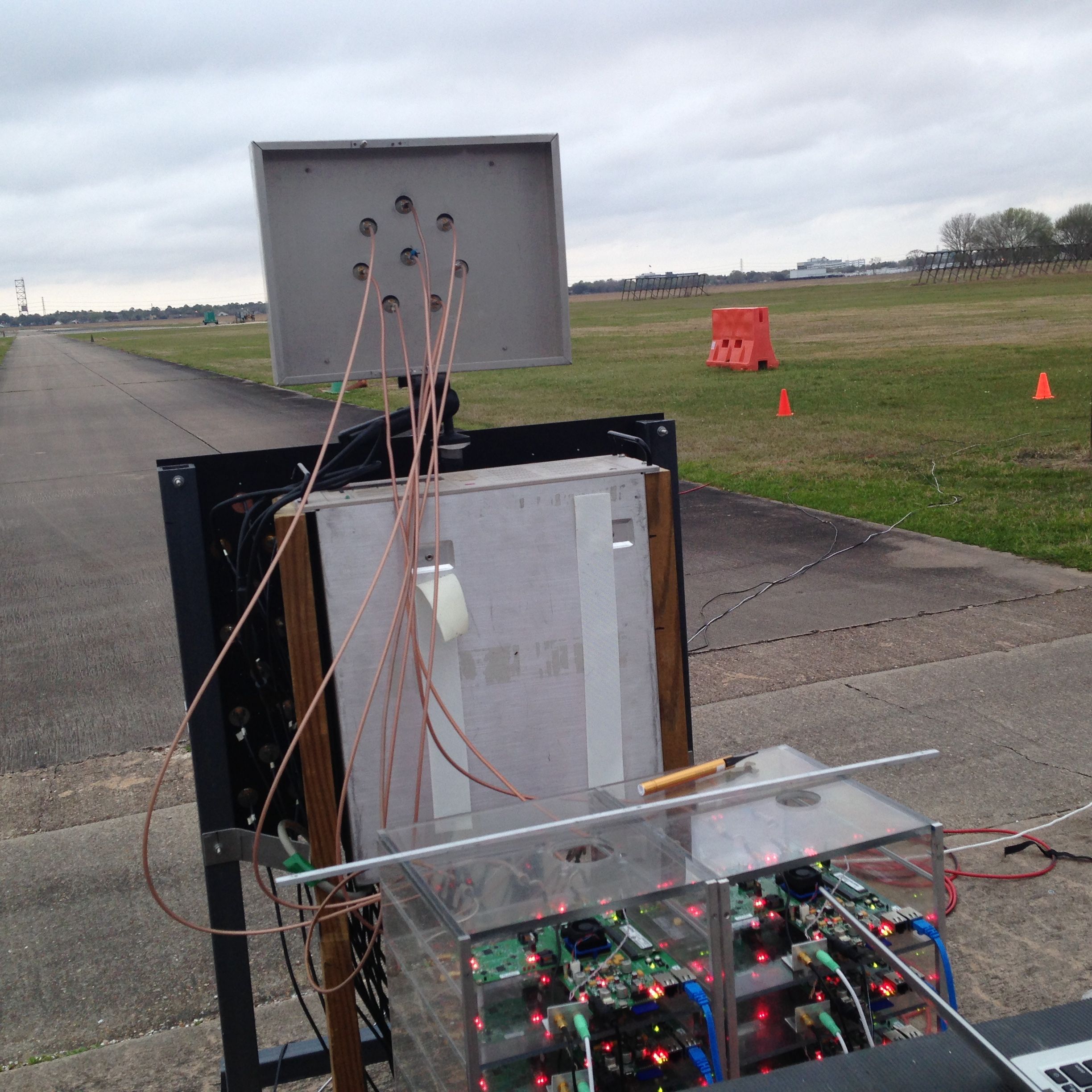SoftNull

Dataset Project
SoftNull is a transmission beamforming based self-interference reduction technique for massive MIMO systems. It eliminates the need for analog cancellers and hence uses many antennas to enable a new functionality in “software,” i.e., current half-duplex radio based architecture can be used to achieve full-duplex behavior.
Dataset Description
The data for SoftNull was collected in three environments: Anechoic Chamber (file start with chamber), indoor (with rich scatters) and outdoor, all at the NASA facilities; see pictures below. In chamber environment, there is one reflector, except for one case of Chamber-ReflectInfft0deg.mat, which is the same chamber environment without the reflector. In the indoor environment, there are a lot of reflectors (see pictures below). Location of 2 of the 4 mobiles is also shown. Outdoor environment is an open field as shown below.
In each measurement, we have 80 antennas at the base station (72-antenna plane array at the bottom and 8-antenna circular array at the top) and 4 single antenna users. Thus, we have 84 antennas in the whole system of 5 nodes. Then we let each antenna transmit pilot in turn, and all other antennas are in receive mode to measure the channel response (AGC is enabled). Therefore, we have channel response matrices of dimension 84*84 for each subcarrier. 1-72 is the antenna index of the plane antenna array, 73-80 is the antenna index of the circular antenna array, and 81-84 is user antenna index.
Each dataset (i.e. each .mat file) includes two structs, one is experimentSetup, it records the related gain settings; the other one is pktResult, it is a 1*25 struct, which records data for 25 packets. For each packet, pktResult includes channelResponse and other related values. For example, when we want access to the channel response corresponding to packet 1, then we get it from pktResult(1).channelResponse, we have an 84 X 84 X 64 matrix. The first dimension is the receive antenna index, the second dimension is the transmit antenna index, and the third dimension is subcarrier index.
Note that the array height is very low for an infrastructure node. So the data represents the worst case for a base-station deployment, and hence the SoftNull gains can be seen as a lower bound for actual deployments. Actual base-station deployments will have higher array heights and hence will have to deal with less back-scattering reflections that increase self-interference.
The dataset was collected by Evan Everett and Clayton Shepard, with support from NASA (big thanks to them!). For any questions about this dataset, please contact the authors or the RENEW team.
Before you use the datasets, please read the Data Copyright and License Agreement below.Data Copyright and License
Rice University hereby grants you a non-exclusive, non-transferable license to use the data for commercial, educational, and/or research purposes only. You agree to not redistribute the data without written permission from Rice University.
You agree to acknowledge the source of the data in any publication or product reporting on your use of it.
We provide no warranty whatsoever on any aspect of the data, including but not limited to its correctness, completeness, and fitness. Use at your own risk.
You agree to acknowledge the following publications:
- Evan Everett, Clayton Shepard, Lin Zhong, and Ashutosh Sabharwal, "SoftNull: Many-antenna Full-duplex Wireless via Digital Beamforming," in IEEE Transactions of Wireless Communications, December 2016
in any publication or product reporting on your use of the data. If the data is not part of the Asilomar2016 reference data, you also agree to acknowledge the additional source of the data, if applicable.
NOTE: Downloading, obtaining, and/or using the data in any means constitutes your agreement with these terms.
To cite the dataset, please use the following BibTeX entry:
@article{SoftNull,
Author = {Evan Everett and Clay Shepard and Lin Zhong and Ashutosh Sabharwal},
Journal = {IEEE Transactions on Wireless Communications},
Title = {SoftNull: Many-antenna Full-duplex Wireless via Digital Beamforming},
Volume={15},
Number={12},
Month= {December},
Pages = {8077 — 8092},
Year = {2016}}
@INPROCEEDINGS{8645391,
author={Doost-Mohammady, Rahman and Bejarano, Oscar and Zhong, Lin and Cavallaro, Joseph R. and Knightly, Edward and Mao, Z. Morley and Li, Wei Wayne and Chen, Xuemin and Sabharwal, Ashutosh},
booktitle={2018 52nd Asilomar Conference on Signals, Systems, and Computers},
title={RENEW: Programmable and Observable Massive MIMO Networks},
year={2018},
pages={1654-1658},
doi={10.1109/ACSSC.2018.8645391}}


